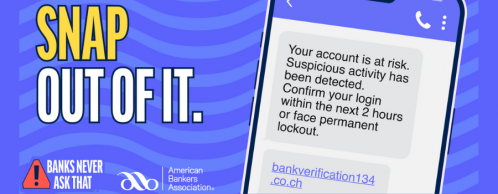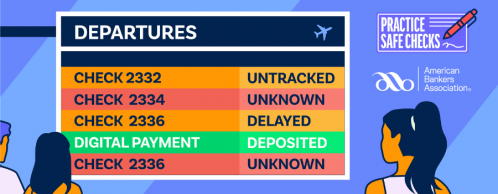
How Can I Make My Mobile Banking Experience Safe?
Article By: Randy Yeast, Chief Technology Officer
Mobile devices are becoming the convenient way to do almost everything. But is it safe to bank from your mobile device? Keep in mind the following and your financial information will be protected.
1. Download the verified banking app via our website.
There is a link to the app stores on our website to help you download the correct app. Accessing the correct link to download your application is critical. Using the application instead of searching online is the preferred secure method for accessing online banking on a mobile device. Visit our Ways to Access Your Account | Security Financial Bank (sfbank.com) page on our website to access the links for the apps.
Always verify the application you're downloading by referencing the above link. Never use any third-party app stores. SFB mobile banking applications are only hosted on Google Play and the Apple App store.
2. Mobile web browser access
Always be certain if you are accessing the Security Financial Bank website via the web browser on your mobile device that you are using the https://sfbank.com link. Once you enter in that link and select the Online Banking login link you will see secure.sfbank.com displayed in your browser. When this link is displayed you can be assured that you are accessing the legitimate website for your online banking needs.
3. Use two-factor or multi-factor authentication anytime it's available.
Two-factor authentication requires customers to use not only a password or PIN to login to their account, but also a second way to confirm your identity, such as duplicating a code that had been sent via text message to their cell phone. Utilizing one of these methods significantly increases the security of your account access and reduces the impact should your password be lost or compromised.
3. Use a strong password.
One of the best ways to protect yourself is to use a password that contains random upper- and lower-case letters, numbers, and symbols. Don't ask your browser to remember it for you either; use a reputable password manager instead.
4. Do not reuse passwords.
The reuse of specific passwords across different platforms for logins is one of the ways that criminals access your information once an initial password has been compromised. Use uniquely different passwords across all your different logins.
5. Avoid using public Wi-Fi.
When you log onto a public Wi-Fi hotspot, you often get a warning that you're not on a secure network, and that other may be able to watch your online actions. That's a strong reason not to conduct any financial business using a public network. Instead, use your cellular network or your home Wi-Fi to better protect your personal information. If you must use public Wi-Fi, consider using a software VPN application on your phone to encrypt your connection.
6. Set up account alerts via email, text, or the app.
This quick notification will help to detect potentially fraudulent activity, which can then be addressed in a timely manner.
7. Mobile or application emails and reset requests
If you receive an email, text, or phone call asking you to reset your password or asking you to access specific links other than https://sfbank.com or secure.sfbank.com and you didn't request them or you feel that they are suspicious, please contact customer service at 888-254-0615 or customerservice@sfbank.com and a live person can verify and respond to your inquiry.
As chief technology officer for SFB, Randy Yeast is responsible for the overall management and strategic vision of the bank's information technology, systems and business intelligence data management.



